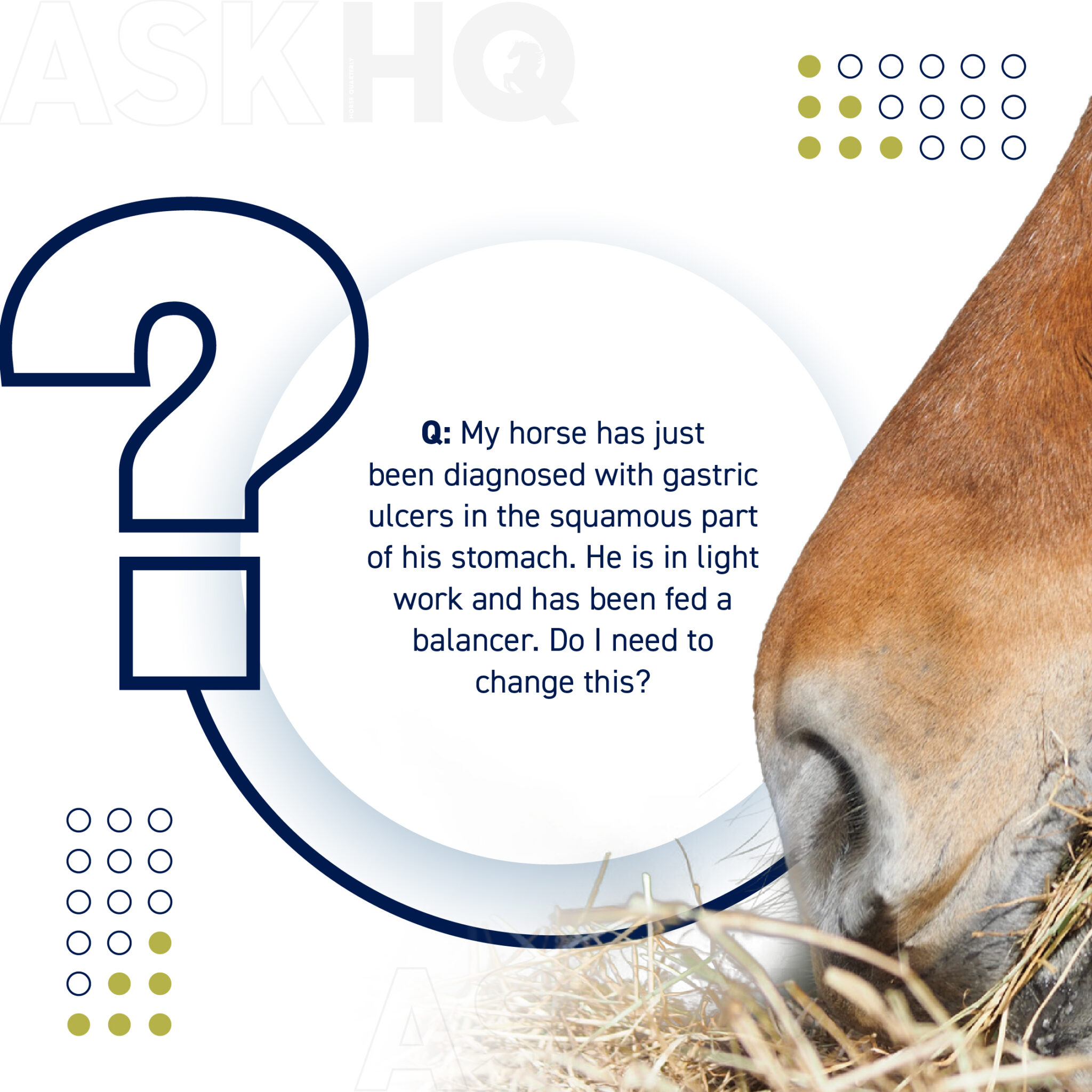Q: My horse has just been diagnosed with gastric ulcers in the squamous part of his stomach. He is in light work and has been fed a balancer. Do I need to change this?
First and foremost, it is important to note that your treatment and management plan should be arranged in consultation with your vet. Our answer below contains generalised advice and may not be suitable for your specific horse.
A: Like all horses, those with gastric ulcers, or those prone to them, should have access to forage at all times. This keeps the horse chewing and producing acid-buffering saliva while also keeping a steady flow of fibre going into his stomach to soak up the acid produced to begin digestion. Any periods without forage allow acid to build up, which can then splash up and damage the vulnerable squamous mucosa.
If your horse is fussy about his forage, consider offering alternative fibre sources alongside hay to encourage natural foraging behaviour and to increase overall fibre intake. Options for this include different types of grass and hay, chaff or even hay pellets.
Starch from cereals increases gastric acidity levels, so it is important to ensure that any feeds given alongside the forage are low in starch. Your balancer is unlikely to contain much starch, but it is worth double-checking this. It is also a good idea to split hard feed across as many meals as possible over the course of 24 hours to support efficient digestion.
Finally, before exercising your horse, ensure that he has forage or fibre in his stomach to mop up the acid present and reduce the risk of splashing acid that damages the mucosa.

